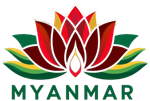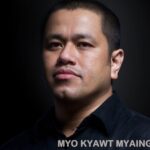
Soe Paing — Biography
Soe Paing is a veteran Burmese vocalist known for his contribution to modern Burmese popular music during the cassette and early CD era. Active primarily from the 1980s through the early 2000s, he gained recognition for his polished vocal delivery, live stage presence, and collaboration with several well-known musicians of his generation. He is regarded as part of the transitional era of Myanmar music that bridged traditional orchestral style with modern studio-based pop production.
Early Life and Background
Publicly available information about Soe Paing’s early childhood, birthplace, and family background is limited, as many Burmese singers from his generation began their careers in an era when media profiles and interviews were not systematically archived. What is broadly acknowledged is that he entered the music scene with a trained and disciplined vocal tone at a time when Myanmar’s music industry relied on analog recording and live radio appearances, requiring strong technical performance without digital correction.
Entry into Music Profession
Soe Paing’s introduction to the professional music world occurred at a time when talent discovery depended on live shows, performance contests, and radio auditions rather than television competitions or social media exposure. His early appearances in public events allowed him to gain attention among bandleaders and music producers. As his voice gained familiarity among listeners, he began participating in studio recordings intended for cassette album releases, which were the dominant commercial format at the time.
Rise to Recognition
His rise in popularity coincided with a period when male vocalists with expressive, disciplined, and controlled performance styles were in high demand. He became known for his ability to interpret romantic and dramatic lyrical themes without exaggeration, relying instead on clarity, breath control, and tonal balance. His reputation grew further through stage performances that maintained technical consistency without relying on theatrics.
Career Peak and Recorded Works
During the height of his career, Soe Paing participated in studio albums that circulated widely through cassette tapes sold in urban and provincial markets. Although detailed discographies from that period are not comprehensive due to lack of preserved publishing records, he is credited with a number of solo releases as well as contributions to compilation albums. His songs were frequently broadcast on radio programs dedicated to Burmese contemporary music. His live performances at public concerts, charity events, and seasonal music shows further strengthened his national profile.
Musical Style and Vocal Characteristics
Soe Paing’s vocal technique is typically described as controlled, steady, and cleanly articulated. He did not rely on excessive vibrato or dramatic ornamentation. Instead, he delivered lyrics with a focus on diction and emotional restraint. This approach distinguished him from highly theatrical singers of the period and made his recordings adaptable to radio and cassette listening environments, where clarity and vocal intelligibility were crucial.
Collaborations and Professional Associations
Like many singers of his era, Soe Paing worked with a number of composers, lyricists, and studio arrangers who shaped the sound of Burmese pop. His collaborations included work with live bands as well as studio-based orchestras that produced instrumental accompaniments for cassette recordings. While some of his contemporaries shifted toward informal live venues, he maintained a presence in both formal concert settings and studio work, which allowed him to remain relevant during a transitional period in the industry.
Later Career and Current Status
As the Burmese music industry evolved with digital distribution, televised talent shows, and online music platforms, Soe Paing’s public visibility decreased. However, he has remained recognized among listeners who grew up during the cassette era, and his work continues to circulate through re-released recordings and shared digital uploads of archived material. There is no public record that he has formally retired from music, but his current activities are not prominently documented in mainstream media.
Influence and Legacy
Soe Paing belongs to a generation of male vocalists who maintained musical standards during a period when Myanmar’s recording infrastructure was still limited. His consistency in tone, avoidance of excessive theatrics, and disciplined stage presence made him a model for singers working within traditional broadcast constraints. He represents a period before digital editing, where a singer’s reputation depended on vocal accuracy, breath control, and live performance discipline. Because of this, he is remembered by many listeners as part of the stable foundation of modern Burmese pop singing.
Distinction from Other Figures Named “Soe Paing”
It is important to distinguish singer Soe Paing from other public figures with the same name, including individuals in political or literary fields, as well as a separate experimental vocalist of Burmese origin who is active internationally. The subject of this biography is specifically the classic-era male singer associated with Myanmar popular music recordings and stage performances of the late 20th century.
Position in the Timeline of Burmese Music History
Soe Paing’s active years fall between two major cultural shifts in Myanmar music: the transition from fully live orchestral performance to cassette-era studio production, and the later shift from physical albums to digital platforms. His generation provided continuity between traditional performance training and the emerging commercial music economy. As a result, his career is often cited when examining how Burmese popular music preserved vocal discipline while adapting to recorded formats.
FAQ — Singer Soe Paing
Q: Who is Soe Paing in the context of Myanmar music?
A: Soe Paing is a veteran Burmese singer known for his contribution to contemporary popular music during the cassette era, recognized for his disciplined vocal delivery and consistent stage performance.
Q: What period was Soe Paing most active as a singer?
A: He was most active between the 1980s and early 2000s, during the peak of cassette and radio distribution in Myanmar.
Q: What musical style is Soe Paing known for?
A: He is known for a controlled and clear vocal style with minimal ornamentation, suited to studio recording and radio play.
Q: Is Soe Paing still active?
A: Although he is still alive, there are no documented recent large-scale performances or public releases, and his current activities are not widely reported.
Q: What is Soe Paing’s significance in Myanmar music history?
A: His work represents a transitional generation between traditional live performance and modern recorded pop, making him part of the structural foundation of late 20th-century Burmese music culture.






